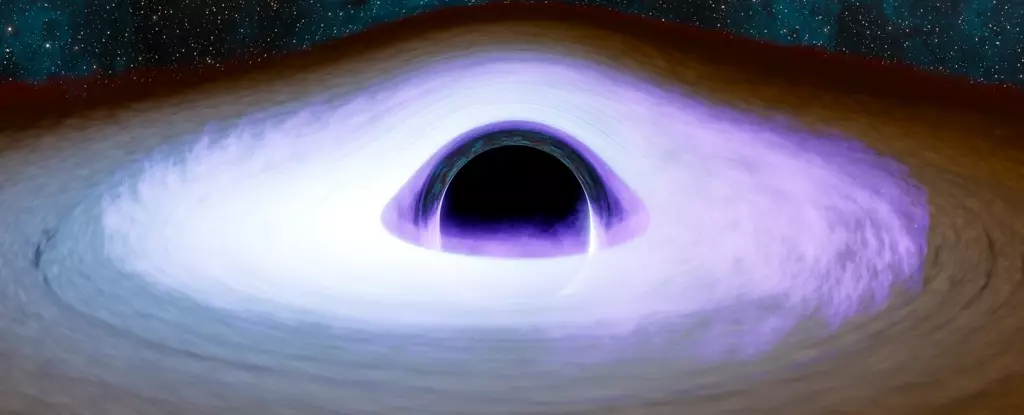Experiencing a total solar eclipse is one of the most breathtaking phenomena one can witness. As the Moon obscures the Sun, observers are treated to the brilliant halo of the solar corona, a sight that leaves an indelible mark on the memory. This ethereal glow represents the Sun’s outer atmosphere, comprised of gases heated to millions of degrees. The juxtaposition between the corona and the obscured light of the Sun serves not just as a visual spectacle, but also as a reminder of our quest to comprehend the universe’s many mysteries. While the dynamics of stellar coronas have been extensively studied, the concept of a similar structure surrounding black holes presents astrophysicists with a perplexing challenge.
The phenomenon of black holes has captivated scientists since their theoretical inception. An active black hole, according to contemporary astrophysical models, is enveloped by a toroidal structure composed of gas and dust—an accretion disk. This disk is characterized by heated material spiraling into the black hole, generating intricate dynamics and radiation. Furthermore, from the poles of these mighty gravitational entities emerge jets of ionized matter, propelled at velocities approaching the speed of light. These jets add another layer of complexity, leading to diverse manifestations termed active galactic nuclei (AGNs). The orientation of a black hole in relation to Earth alters our observations of AGNs, which can be categorized as either obscured or unobscured.
The challenge of investigating black hole coronas lies in their inherent nature. As with the Sun’s corona cloaked by the Moon’s shadow during an eclipse, so too is the black hole’s corona often obscured from our view. The accretion disk—a luminous ring of boiling gas—dominates the electromagnetic spectrum, rendering the fainter corona nearly invisible. However, current astrophysical theory posits that the corona surrounding a black hole is significantly hotter than its solar counterpart, estimated to reach temperatures in the vicinity of billions of degrees. This high-energy environment generates X-rays that, when scattered off surrounding material in the toroidal disk, may provide vital clues to astronomers.
Recent research published in The Astrophysical Journal has ventured towards unraveling this cosmic enigma. Employing data from NASA’s Imaging X-ray Polarimetry Explorer (IPXE), scientists scrutinized the coronas of a dozen obscured black holes, notably including Cygnus X-1 and LMC X-1. The brilliance of the scattered X-rays not only allowed the researchers to confirm the existence of the coronas, but also to identify discernible patterns within them. The observations suggested that, unlike the spherical configuration of the solar corona, the corona around black holes resembles a disk—coalescing around the rotational axis of the black hole.
The implications of this groundbreaking study extend far beyond mere observation. The data garnered enhances our understanding of the mechanics governing black hole behavior, offering clarity on how these cosmic giants accrete matter. Observational advancements such as these are instrumental in refining existing models of black holes and may catalyze future investigations into distant galaxies’ AGNs. Understanding black hole coronas is vital in making sense of high-energy astrophysical phenomena, ultimately contributing to our broader comprehension of the universe’s dynamic tapestry.
As we continue to decode the mysteries of black holes and their tantalizing coronas, we inch closer to unlocking the secrets of the universe. The dynamic interplay between a black hole and its surrounding environment provides invaluable insights into the intricate web of cosmic evolution, where every new discovery leads us to yet more questions. The cosmos, with its enigmatic nature, beckons us to explore further, and research like this is a crucial step on that enlightening path. Each observation is not just a glimpse into the cosmos but a deeper understanding of the very fabric of existence.

